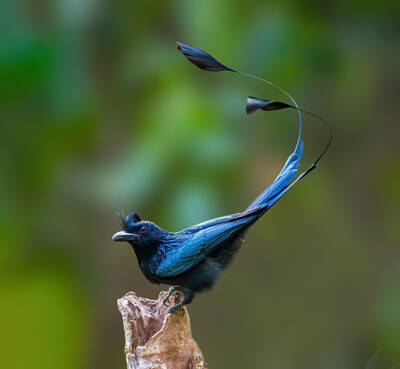
Dicrurus paradiseus
Dicrurus paradiseus,Greater Racket-tailed Drongo,Large drongo, long-tailed drongo, arrow-bearing bird
Features:Similar in appearance to the small disc tail, but larger in size
Greater Racket-tailed Drongo has 13 subspecies.Greater Racket-tailed Drongo is mainly a resident bird, and some are summer migrants, wandering elsewhere in winter. The Great Discus often rests on a solitary tree in an open space. Occasionally, it suddenly takes off, quickly chases the flying insects...
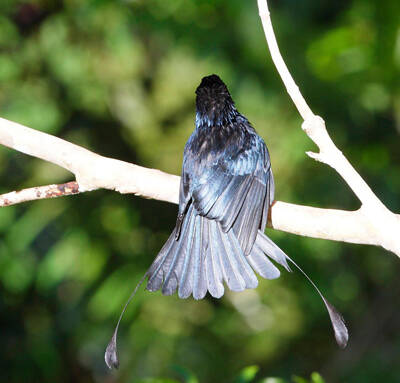
Dicrurus remifer
Dicrurus remifer,Lesser Racket-tailed Drongo,Small tennis ball
Features:The outermost pair of tail feathers is very elongated
Lesser Racket-tailed Drongo has four subspecies.Lesser Racket-tailed Drongo often stays on the top of isolated trees for a long time, and sometimes suddenly flies up quickly to catch flying insects in the air, or fly through dense trees. It flies slowly, with the "disk-shaped tail" of the...
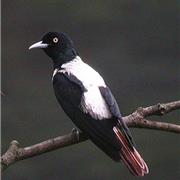
Oriolus mellianus
Oriolus mellianus,Silver Oriole,Magpie oriole, magpie-colored oriole, magpie-colored oriole
Features:The head is brilliant black; the back feathers are silvery white. It can change its tone and imitate the calls of other birds.
Silver Oriole, a medium-sized songbird, is a single species with no subspecies differentiation. It was once a subspecies of the red oriole.Silver Oriole is a summer migratory bird. Arboreal, often moving alone or in pairs, sometimes seen in loose groups of 3-5. Mainly active in the canopy of tall tr...
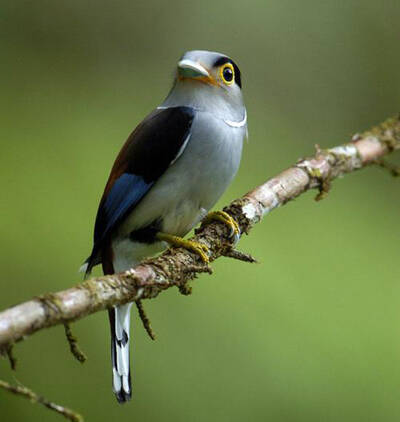
Serilophus lunatus
Sliver-breasted Broadbill,Serilophus lunatus,Hainan broadbill, Silver-breasted silky broadbill
Features:It is not very afraid of people and is slow to react to gunshots. Sometimes it will not fly away even after multiple gunshots are fired to collect specimens.
Silver-breasted Broadbill, also known as Silver-breasted Broadbill, has 10 subspecies.Silver-breasted Broadbill often moves in small groups, especially groups of 10-20 or more. They often move under the canopy. It likes to stay still, is not good at jumping and singing, and its singing sound is low...
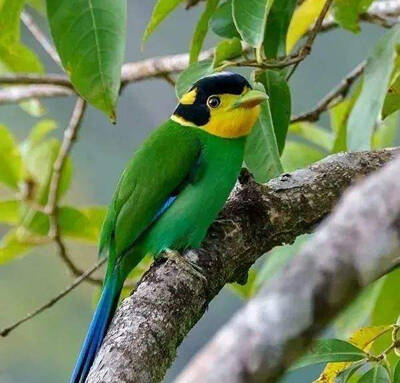
Psarisomus dalhousiae
Psarisomus dalhousiae,Long-tailed Broadbill
Features:Not good at throat noise and jumping
The foreign name of the long-tailed broadbill is Long-tailed Broadbill, and there are 5 subspecies.Long-tailed broadbill is often seen in groups of more than ten or even twenty or thirty, foraging; they mainly feed on insects and fruits. They usually live quietly on bushes or small trees in the shad...
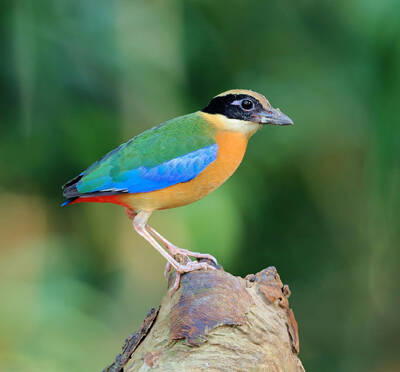
Pitta brachyura
Pitta brachyura,Indian Pitta,Five-colored bird, Indian Pitta
Features:It is named after its rich and bright colors such as red, green, blue, white, black, yellow, brown, and chestnut. It is a bird with great ornamental value.
The blue-winged pitta is called Indian Pitta in foreign language, and has no subspecies.Blue-winged pitta is often seen in groups of 10-20 under the canopy, or on nearby branches. It likes lowland shrubs and secondary forests. It jumps on the ground like a thrush. It is active in the shade and wet p...
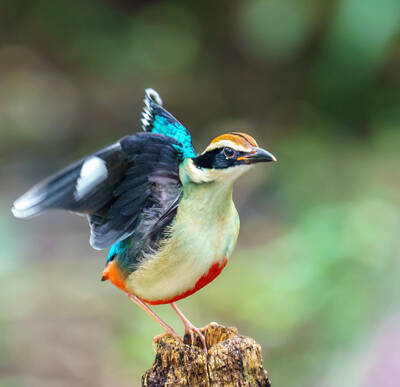
Pitta nympha
Pitta nympha,Fairy Pitta
Features:Known as the "Fairy among Birds"
Fairy Pitta, also known as Fairy Pitta, has two subspecies.Fairy Pitta is a summer migratory bird and a traveling bird. It often moves alone in the grass under the bushes, foraging while walking on the ground. It is agile, alert and timid, good at jumping, and often jumps and walks on the ground. It...
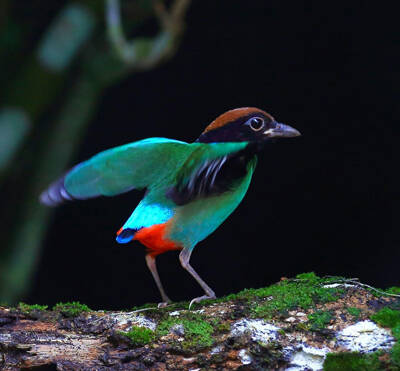
Pitta sordida
Pitta sordida,Hooded Pitta
Features:Black head, green upper body, dark wings with white markings
The green-breasted pitta is called Hooded Pitta in English, and has 12 subspecies.The green-breasted pitta is mostly seen alone, and sometimes 2~3 are seen together. It often digs up fallen leaves in wet leaf houses, frequently turning over dead branches and leaves on the ground with its feet to fin...
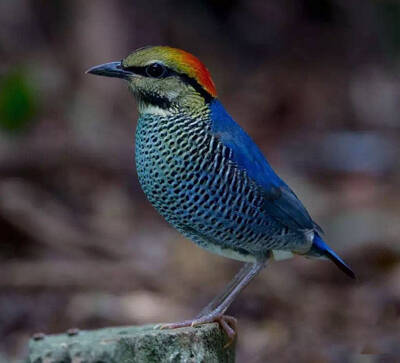
Pitta cyanea
Pitta cyanea,Blue Pitta,
Features:The call is like a "pleoow-whit" sound like flowing water
Blue Pitta, also known as Blue Pitta, has three subspecies.Blue Pitta runs on the ground, foraging for food, and feeds mainly on insects such as beetles. They are resident birds and rarely fly. In the Indian subcontinent, due to the local seasonal climate, there is a phenomenon of short-term migrati...
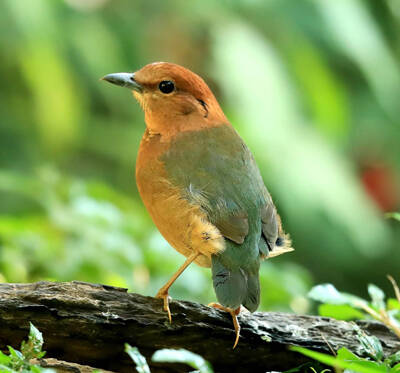
Pitta oatesi
Pitta oatesi,Rusty-naped Pitta,Guoba Que
Features:The call is simple and mournful, and the head is chestnut brown.
The Rusty-naped Pitta is called Rusty-naped Pitta in English, and has 4 subspecies.The Chestnut-headed Pitta does not form groups, and is seen alone or in pairs in winter or summer. The legs are long and strong, and they are good at running and jumping. They frequently use their feet to turn over th...
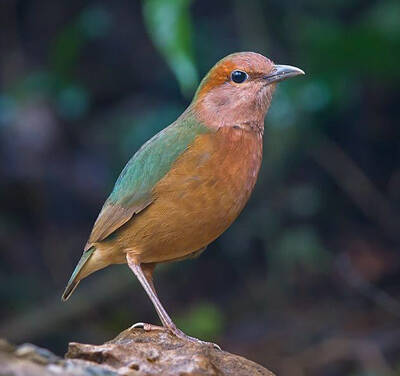
Pitta soror
Pitta soror,Blue-rumped Pitta
Features:It is an olive and tawny pitta
Blue-rumped Pitta, also known as Blue-rumped Pitta, has 5 subspecies.Blue-rumped Pitta usually hides in bushes and grasses, and when frightened, it flies a short distance along the ground to escape. The sound is subtle. It often digs up fallen leaves in the wet ground, frequently turning over the de...
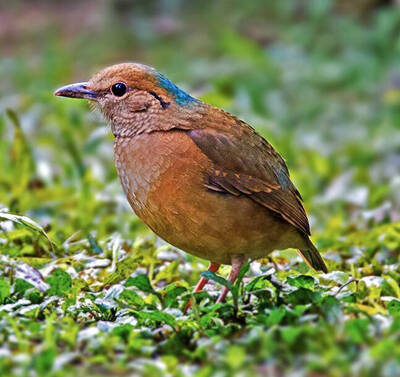
Pitta nipalensis
Pitta nipalensis,Blue-naped Pitta
Features:The male bird has bright blue top of head and nape. The female bird is similar to the male bird but the nape is tea yellow instead of blue.
Blue-naped Pitta, also known as Blue-naped Pitta, is a medium-sized bird of the Passeriformes family, with two subspecies.Blue-necked Pittas often move alone or in pairs, mostly on the ground under the forest or among the bushes, and are more active in the early morning and evening. They often move...
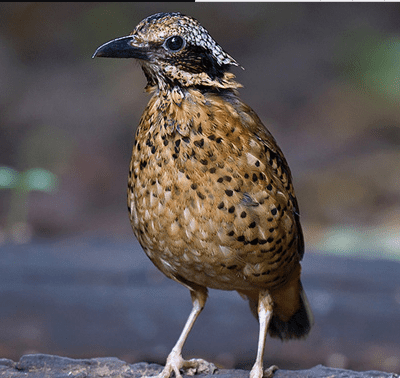
Pitta phayrei
Pitta phayrei,Eared Pitta,Magpie Yellow Oriole
Features:The body is round and plump, with a short tail and long legs. The male bird has a black crown from the top of the head to the back of the neck.
Double-braided Pitta, with no subspecies.Double-braided Pitta forages in bamboo forests and bushes, using its powerful claws and beak to flip dead leaves on the ground to find food, feeding on insects. They often move on the ground. Because their feathers are very similar to dead leaves and they are...
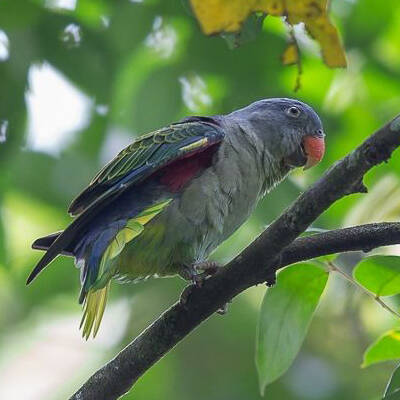
Psittinus cyanurus
Psittinus cyanurus,Blue-rumped Parrot
Features:The body is mainly green, with bright red feathers in the underwing coverts, slightly reddish shoulders, and yellow edges on the wing coverts.
Blue-rumped Parrot, also known as Blue-rumped Parrot, is a small parrot and the only species in the genus Psittinus.Blue-rumped Parrots sometimes have a flock of up to 20 birds. They eat seeds, fruits and flowers.The Red List of Endangered Species of the World Conservation Union (IUCN) is near threa...

Falco peregrinus
Falco peregrinus,Peregrine Falcon,Rosewood eagle, pigeon tiger, duck tiger, blue swallow
Features:It has a ferocious temperament and is the fastest diving bird, with a maximum speed of over 300 kilometers per hour.
Peregrine falcon is called Peregrine Falcon in foreign language, and it has 18 subspecies. The three types of peregrine falcons distributed in China are mainly the southern subspecies of peregrine falcons, the eastern subspecies of peregrine falcons (also known as the nominate subspecies), and the c...
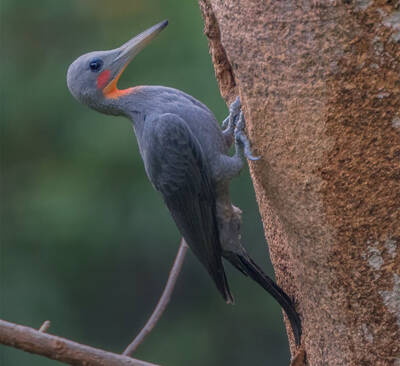
Great slaty woodpecker
Great slaty woodpecker,Mulleripicus pulverulentus
Features:Slate grey throughout, yellow throat skin
Great Slaty Woodpecker is a large gray woodpecker with two subspecies.Great Slaty Woodpecker is a resident bird, often in small groups of 4 to 6. They live mostly in trees, often moving from one tree to another. They fly clumsily, flapping their wings vigorously, often making loud noises. They also...
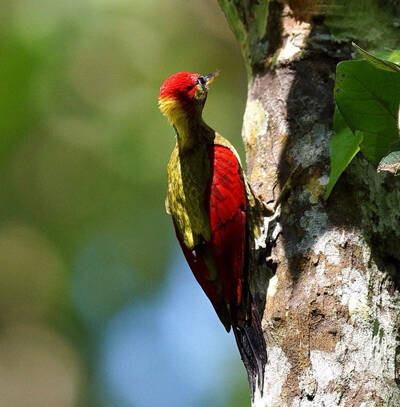
Picus rabieri
Picus rabieri,Red-collared woodpecker
Features:The top of the head, nape, collar and whiskers are all red, and the body feathers are mainly green
Red-collared Woodpecker, no subspecies.Red-necked Woodpecker is a resident bird, mainly inhabiting low mountain evergreen broad-leaved forests and forest margins, and also appears in bamboo forests and secondary forests. Often active alone. They move and forage mostly on trees and on the ground. The...
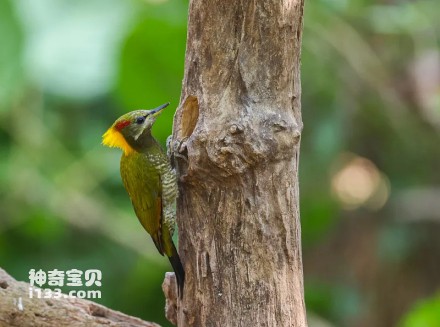
Picus chlorolophus
Picus chlorolophus,Lesser yellownape
Features:The forehead and eyebrows are bright red, the top of the head and ear feathers are olive green, and the nape has a bright yellow crest, which is very eye-catching.
The Yellow-crowned Woodpecker, also known as the Lesser Yellownape, is a small bird with three subspecies.The Yellow-crowned Woodpecker is a jungle bird, mostly found in forests with higher terrain, and less common in plains. It often moves alone or in pairs, and is sometimes seen flying with other...
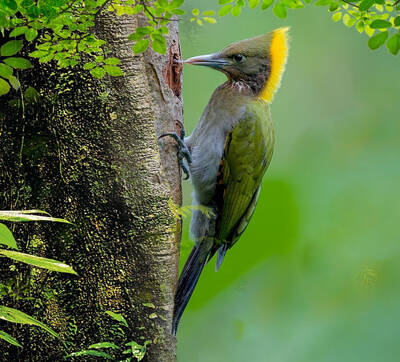
Picus flavinucha
Picus flavinucha,Greater yellownape
Features:Yellow throat, long yellow crest, black tail
The Greater Yellownape is a larger green woodpecker. The difference between it and the Yellow-crowned Green Woodpecker is that it does not have a red head. There are 8 subspecies.Woodpeckers knock on trees about 500-600 times a day, pecking at an extremely fast speed, almost twice the speed of sound...
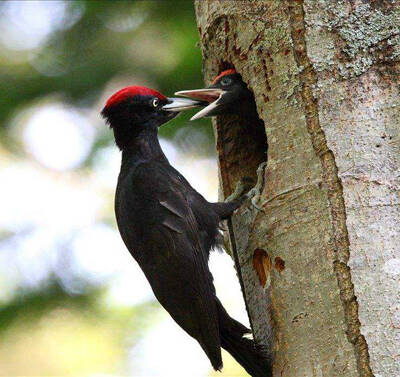
Dryocopus martius
Dryocopus martius,Black Woodpecker
Features:It is the largest woodpecker and is almost pure black.
The black woodpecker is called Black Woodpecker in foreign language, and has 2 subspecies.The black woodpecker's flight is not stable, but not as undulating as other woodpeckers. It often acts alone. In the late breeding period, it forms a family group. It mainly feeds on tree branches, thick br...
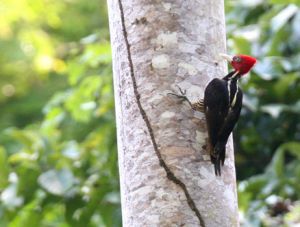
Dryocopus javensis
Dryocopus javensis,White-bellied woodpecker
Features:The top of the head has a long red crest, the jawline is also red, the rest of the head, neck, chest and upper body are black, and the waist and abdomen are white
White-bellied Black Woodpecker is a medium-sized bird of the Picidae family and the genus Black Woodpecker, with 15 subspecies.White-bellied Black Woodpeckers often move alone or in pairs, and occasionally small groups can be seen. They mostly move and forage in the middle and upper parts of tall tr...

